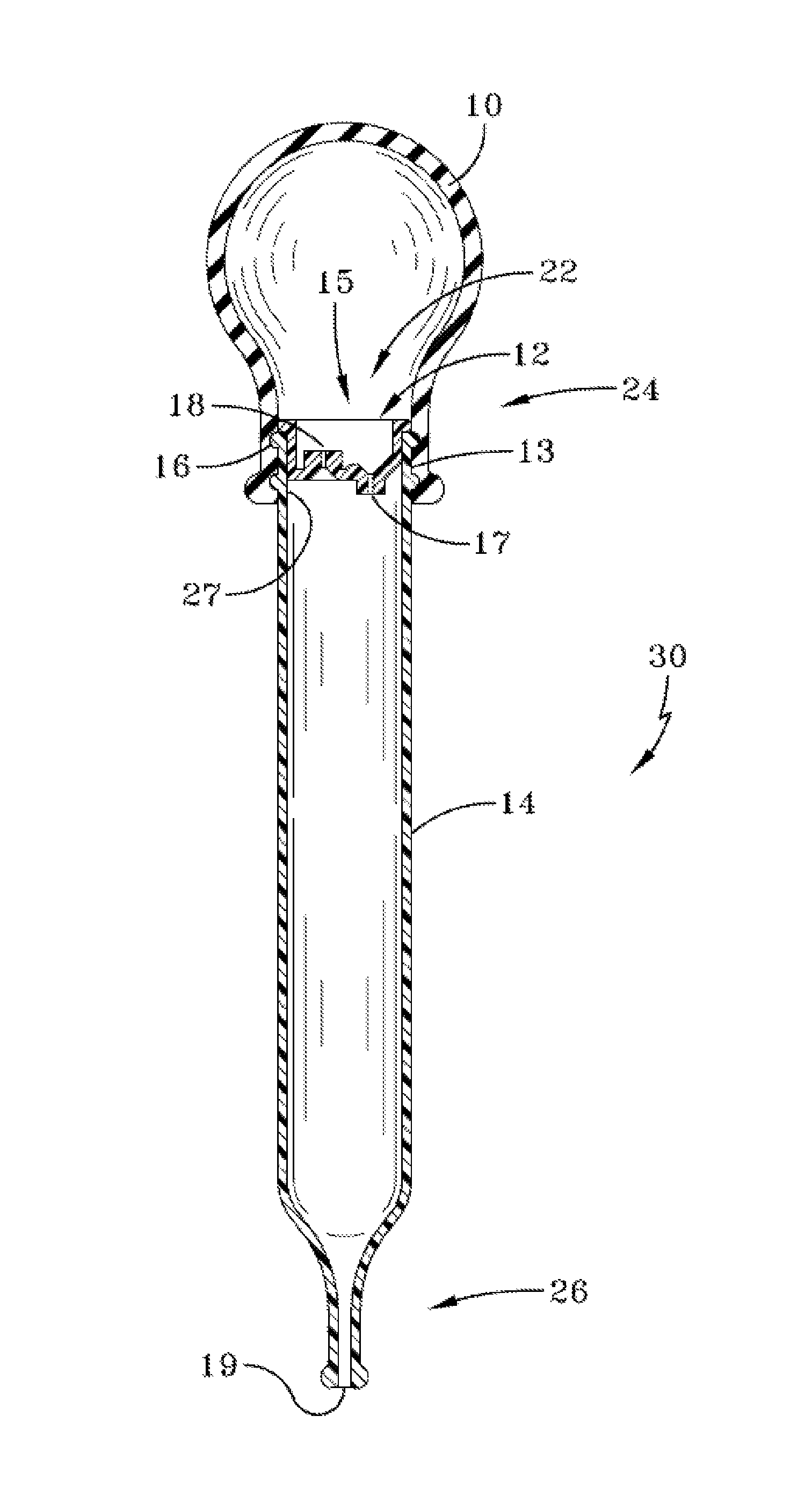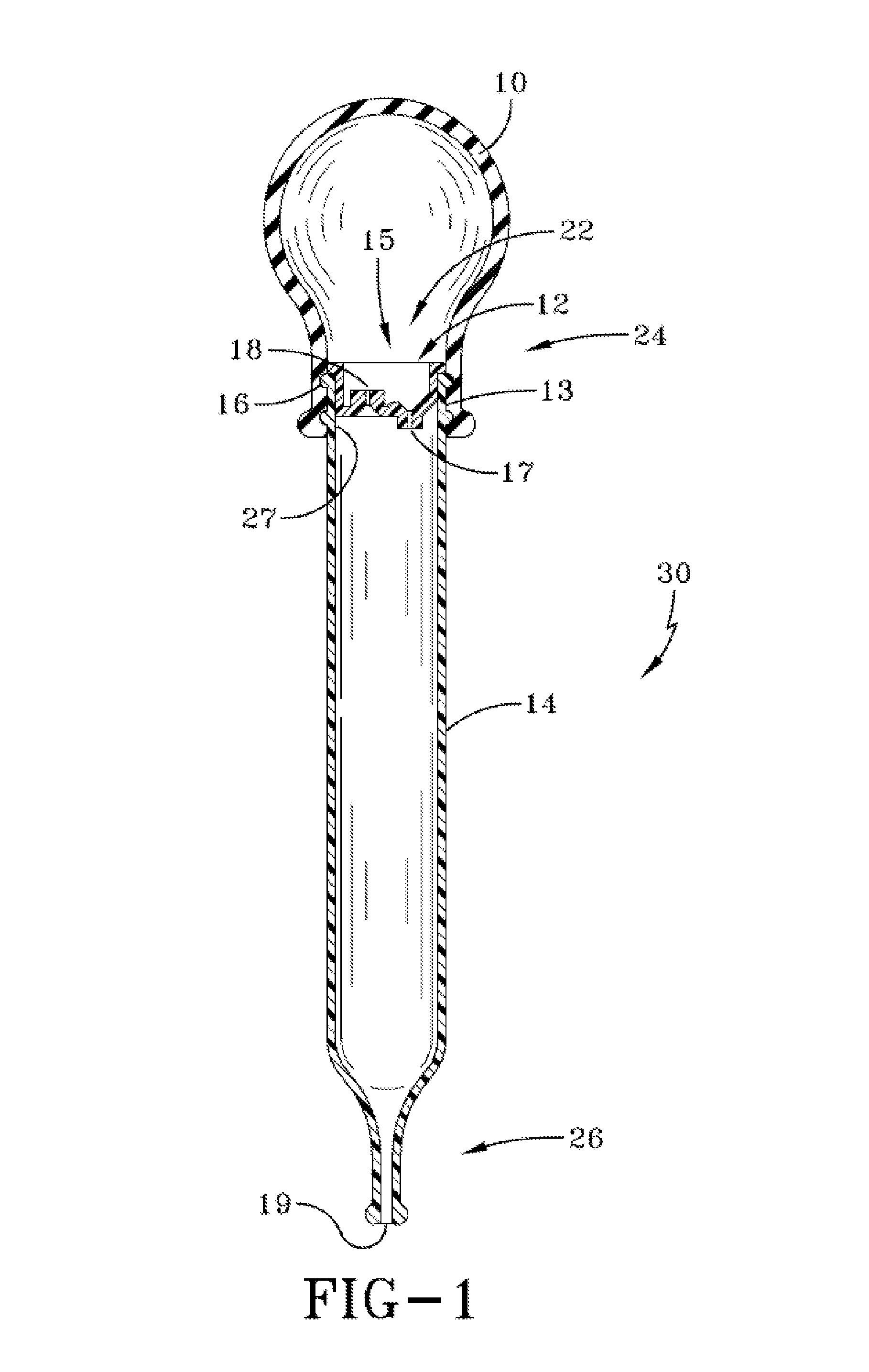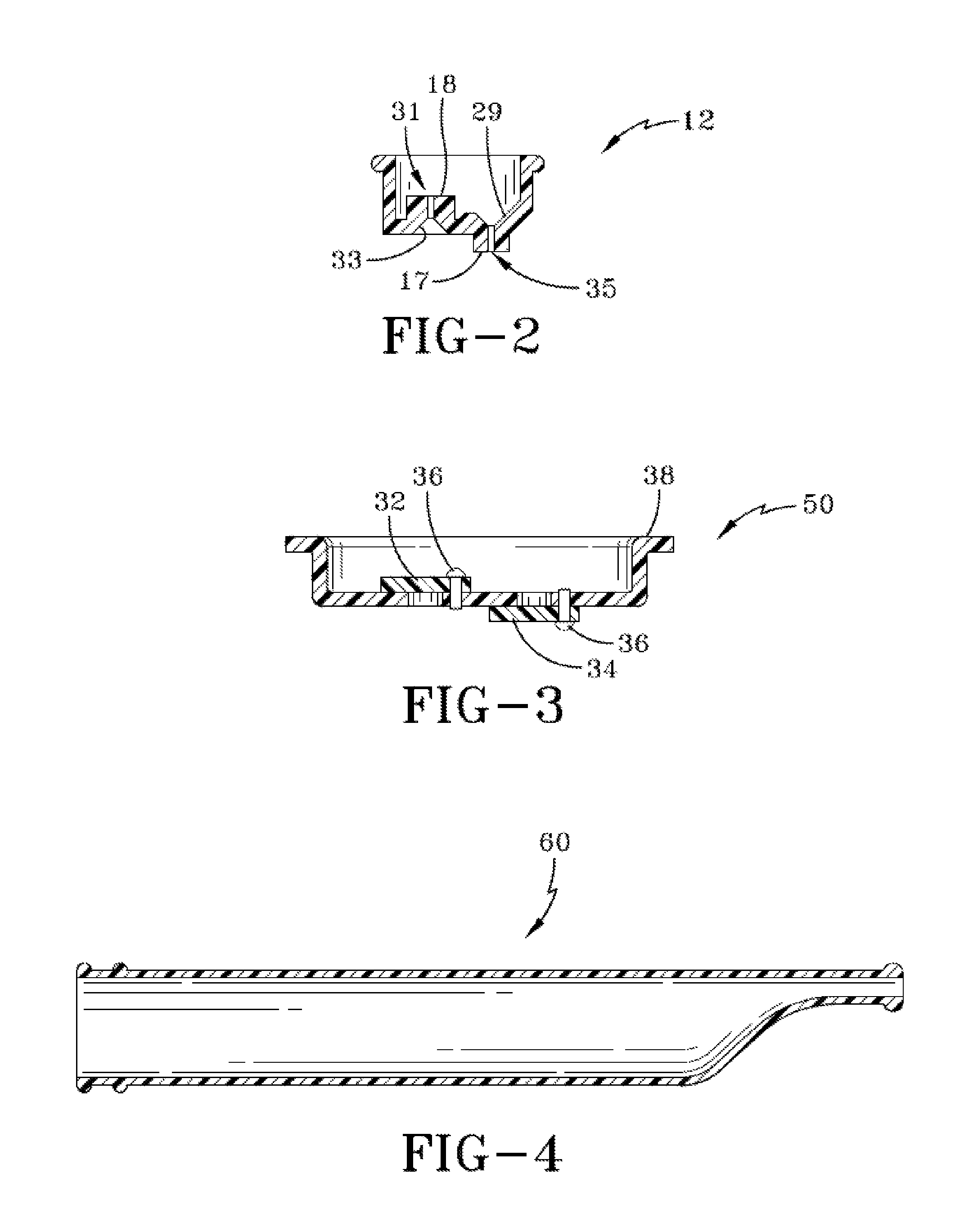Leak resistant siphoning device for use in fluid transfer
a siphoning device and fluid transfer technology, applied in the direction of liquid handling, grain husking, packaging goods types, etc., can solve the problems of low cost basters that do not adequately contain liquid, liquid and/or partial solids drawn up into the hollow member often leak out of the baster unintentionally, and reduce the risk of leakage. , the effect of improving the sealing and less fluid spillag
- Summary
- Abstract
- Description
- Claims
- Application Information
AI Technical Summary
Benefits of technology
Problems solved by technology
Method used
Image
Examples
Embodiment Construction
[0035]The present invention has many advantages over the prior art baster. This invention draws on the principals of a vacuum and the addition of a valve assembly inserted into a baster tube opening at a bulb end of the tube to create a leak resistant device that is simpler to operate, more dependable and as easy to clean than the prior art that is commercially available.
[0036]One configuration of the present invention is illustrated in FIG. 1. The present invention, as represented via the example of a baster / device 30, consists of a resilient bulb 10, a one piece check valve assembly 12 and a elongated hollow tube 14. Stretching an inner surface of the bulb opening 15 over a first end 24 of the tube 14 having a first opening 22 easily assembles these parts. Circumferential projections 16 are added to the elongated tube 14 to increase the sealing properties between the bulb 10 and the tube 14.
[0037]Although the invention is illustrated as a baster / device, it should be appreciated th...
PUM
| Property | Measurement | Unit |
|---|---|---|
| pressure | aaaaa | aaaaa |
| elastomeric | aaaaa | aaaaa |
| suction | aaaaa | aaaaa |
Abstract
Description
Claims
Application Information
 Login to View More
Login to View More - R&D
- Intellectual Property
- Life Sciences
- Materials
- Tech Scout
- Unparalleled Data Quality
- Higher Quality Content
- 60% Fewer Hallucinations
Browse by: Latest US Patents, China's latest patents, Technical Efficacy Thesaurus, Application Domain, Technology Topic, Popular Technical Reports.
© 2025 PatSnap. All rights reserved.Legal|Privacy policy|Modern Slavery Act Transparency Statement|Sitemap|About US| Contact US: help@patsnap.com



